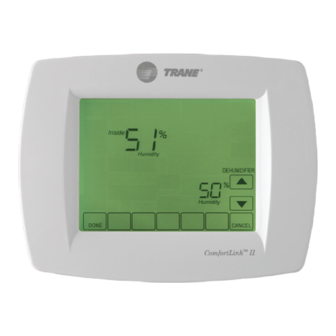
Table of Contents
Advertisement
Air Conditioning Procedures
Service Guide
Communicating Residential
Comfort Systems
A Comprehensive Reference for Service of Communicating
Residential Air Conditioning, Heat Pump & Gas Furnace Systems
First Edition
© 2010 Trane Inc.
All rights reserved. No part of this book
may be reproduced, in any form or by
any means, without permission in
writing from the publisher.
Produced and printed in the USA
1.0
Advertisement
Chapters
Table of Contents
Troubleshooting










Need help?
Do you have a question about the ACONT900AC43UA and is the answer not in the manual?
Questions and answers